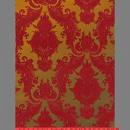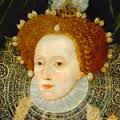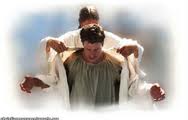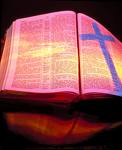
| Next | Previous | Index | Tellout Home |
Revelation's Symbolic Colors
Bible Emotions
 Unfamiliar language and Revelation's symbolic colors purposefully dot the pages of this Biblical book. Colors symbolize various emotions and saturate Bible pages as they do today's society and culture. Using colors, John of Patmos, the Revelation writer, purposely hides his actual intent and meaning from the Ancient Roman authorities. Christians and Jews certainly understood what he was inferring! Revelation's symbolic colors are of great importance to us as they were to John's readers to understand the text's meaning and subtleties. ✞
Unfamiliar language and Revelation's symbolic colors purposefully dot the pages of this Biblical book. Colors symbolize various emotions and saturate Bible pages as they do today's society and culture. Using colors, John of Patmos, the Revelation writer, purposely hides his actual intent and meaning from the Ancient Roman authorities. Christians and Jews certainly understood what he was inferring! Revelation's symbolic colors are of great importance to us as they were to John's readers to understand the text's meaning and subtleties. ✞
Whiteness
 The color white, though technically a "color without hue" or an "achromatic color," often symbolizes "purity, perfection, and innocence." For this reason, brides usually wear a white dress. Since 1566 AD, the Pope has worn white robes to symbolize his perceived purity and innocence. Sir Isaac Newton (1643-1727), the English mathematician, physicist, theologian, and author, discovered that white was not a single color. When a glass prism separate sunlight, it produced a rainbow color blend. ✞
The color white, though technically a "color without hue" or an "achromatic color," often symbolizes "purity, perfection, and innocence." For this reason, brides usually wear a white dress. Since 1566 AD, the Pope has worn white robes to symbolize his perceived purity and innocence. Sir Isaac Newton (1643-1727), the English mathematician, physicist, theologian, and author, discovered that white was not a single color. When a glass prism separate sunlight, it produced a rainbow color blend. ✞
Surprising Composition
The "color white" is referred to in the Royal Society's minutes of 1672, "the most surprising and wonderful composition was whiteness. There is no one sort of ray which alone can exhibit this. 'Tis ever compounded, and its composition is requisite of all the aforesaid primary colors, mixed in due proportion. I often have with admiration beheld that all of the prism colors converge, and thereby to be again mixed, reproduced light, entirely and perfectly white." There are endless shades of white, and top designers swear by more than thirty five white colors, with the best being "Cloud Nine" by Benjamin Moore described as a "neutral galleryesque background" by M.A. Allen of Decor Magazine. ✞
Blackness
 Black, in contrast, often indicates "darkness, death or distress" in the Bible. Like white, black is also not considered a color. In times of mourning, people wear black clothing in society. Black, however, seems to be a favorite choice today for any ceremonial or formal occasion. The Bible also associates black with violence and evil, particularly the absence of the presence of God. Between 1347 and 1351 AD in Europe and Asia, the "Black Death" occurred, also known as the "Great Plague," resulting in an estimated seventy five to two hundred million deaths. It killed between thirty and sixty percent of Europe's population at that time. ✞
Black, in contrast, often indicates "darkness, death or distress" in the Bible. Like white, black is also not considered a color. In times of mourning, people wear black clothing in society. Black, however, seems to be a favorite choice today for any ceremonial or formal occasion. The Bible also associates black with violence and evil, particularly the absence of the presence of God. Between 1347 and 1351 AD in Europe and Asia, the "Black Death" occurred, also known as the "Great Plague," resulting in an estimated seventy five to two hundred million deaths. It killed between thirty and sixty percent of Europe's population at that time. ✞
Operation Rising Star
The "Black Horse" of Revelation 6.5 is an example of black's symbolic use to refer to death and destruction. Covid-19 is another form of pandemic plague devastating communities worldwide, especially their most fragile and elderly members. Not surprisingly, people try to play down the negatives of the color black. When a death occurs on a cruise ship, they announce over the ship's radio "Operation Rising Star" to alert the crew but not spook the other passengers! When Christians die, they move directly from the light of the Christian life into the light of God's presence and not into the blackness of eternal darkness. John 1.7 confirms this, "If we walk in the light, as he is in the light, we have fellowship with one another, and the blood of Jesus, his Son, purifies us from every sin." ✞
Regal Purple and Red
 The color "purple" in fabrics describes the "deep rich shades between crimson and violet." It was very costly to produce in Biblical times because of the rarity of natural dyes and was more valuable than gold! Luxurious purple and red silk clothing were rare and limited to royalty, bishops, priests, and nobility. Israel Antiques Authority expert Dr. Naama Sukenik, in the Slaves' Hill archeological dig one hundred and thirty seven miles south of Jerusalem, found purple cloth from the time of King David in 1000 BC and noted the "gorgeous shades of purple" and that the color had not faded! In Numbers 4.13-14, we read of purple in the wilderness tabernacle, "They are to remove the ashes from the bronze altar and spread a purple cloth over it." Here purple is symbolic of the holiness in the equipment used in Jewish ceremonies. ✞
The color "purple" in fabrics describes the "deep rich shades between crimson and violet." It was very costly to produce in Biblical times because of the rarity of natural dyes and was more valuable than gold! Luxurious purple and red silk clothing were rare and limited to royalty, bishops, priests, and nobility. Israel Antiques Authority expert Dr. Naama Sukenik, in the Slaves' Hill archeological dig one hundred and thirty seven miles south of Jerusalem, found purple cloth from the time of King David in 1000 BC and noted the "gorgeous shades of purple" and that the color had not faded! In Numbers 4.13-14, we read of purple in the wilderness tabernacle, "They are to remove the ashes from the bronze altar and spread a purple cloth over it." Here purple is symbolic of the holiness in the equipment used in Jewish ceremonies. ✞
Mark of Authority
Over time, purple also became a mark of authority, and Roman emperors, kings, and princes wore purple and red. In modern times, bishops still wear purple clothing, and cardinals have red robes. Red is also a blood indicator in the Bible and warns of "danger, murder, rage, and anger." "Stop signs" on the highway are red to catch our attention and alert us to possible danger. In ancient times, the word "red" in the English language represented colors between "purple" and "orange." The word "orange" was first recorded in 1380 AD, describing "any color between red and yellow like fire and carrots!" The "Fiery Red Horse" of Revelation 6.3-4 is an excellent symbolic example of the coming of blood, danger, and anger. ✞
Shakespearean Scarlet
 Being allowed to wear red in Medieval England was a great privilege and honor. Queen Elizabeth 1st of England (1558-1603) was so impressed with William Shakespeare's plays (1564-1616) that she permitted him the honor of wearing royal scarlet silk. King James 1st (1603-1625) followed Queen Elizabeth 1st on the English throne. Shakespeare was recorded in the "Grand Accounts Book" as "one of King James 1's servants for which he received four and a half yards of red cloth, a color befitting his status as a Royal Court member." ✞
Being allowed to wear red in Medieval England was a great privilege and honor. Queen Elizabeth 1st of England (1558-1603) was so impressed with William Shakespeare's plays (1564-1616) that she permitted him the honor of wearing royal scarlet silk. King James 1st (1603-1625) followed Queen Elizabeth 1st on the English throne. Shakespeare was recorded in the "Grand Accounts Book" as "one of King James 1's servants for which he received four and a half yards of red cloth, a color befitting his status as a Royal Court member." ✞
Holiness Blue
 The color blue is associated with "holiness." In Exodus 28.31-35, the LORD GOD commands Moses and Aaron, "Make the robe of the ephod (garment) entirely of blue cloth, with an opening for the head in its center." "Make pomegranates of blue, purple, and scarlet yarn around the robe's hem, with gold bells between them. The gold bells and the pomegranates are to alternate around the robe's hem. Aaron must wear it when he ministers. When he enters the Holy Place, you will hear the bells' sound before the Lord and when he comes out so that he will not die." Aaron's blue robes signified his holiness. ✞
The color blue is associated with "holiness." In Exodus 28.31-35, the LORD GOD commands Moses and Aaron, "Make the robe of the ephod (garment) entirely of blue cloth, with an opening for the head in its center." "Make pomegranates of blue, purple, and scarlet yarn around the robe's hem, with gold bells between them. The gold bells and the pomegranates are to alternate around the robe's hem. Aaron must wear it when he ministers. When he enters the Holy Place, you will hear the bells' sound before the Lord and when he comes out so that he will not die." Aaron's blue robes signified his holiness. ✞
Holy to the Lord
Later, in Exodus 28.36-38a, the LORD GOD adds, "Make a pure gold plate and engrave on it as on a seal 'Holy to the Lord.' Fasten a blue cord to it to attach it to the turban. It is to be on the turban's front. It will be on Aaron's forehead." Blue cloth covers the shielding curtain in the Holy of Holies. Numbers 4.5-6 reads, "When the camp is to move, Aaron and his sons are to go in and take down the shielding curtain and put it over the covenant ark. Then they are to cover the curtain with durable leather, spread a solid blue cloth over that, and replace the poles." "Durable leather" might mean large aquatic mammals' hides, possibly whale skin. ✞
Aaron's Robes
 Aaron's ceremonial robes were associated with the color blue and holiness. The color blue was initially produced from the crushed semi-precious stone "lapis lazuli" and was very expensive and more valuable than gold. The rocks came from far away Afghanistan mines to make the ground-up pigment "ultramarine." Artists favored this color's intensity and brightness. We tend to associate blue in medieval art with holiness, the Virgin Mary's robes' color. The blue carpeting of many church sanctuaries signifies a special and holy place. ✞
Aaron's ceremonial robes were associated with the color blue and holiness. The color blue was initially produced from the crushed semi-precious stone "lapis lazuli" and was very expensive and more valuable than gold. The rocks came from far away Afghanistan mines to make the ground-up pigment "ultramarine." Artists favored this color's intensity and brightness. We tend to associate blue in medieval art with holiness, the Virgin Mary's robes' color. The blue carpeting of many church sanctuaries signifies a special and holy place. ✞
Liturgical Colors
 Some churches hang different colors to indicate the year's seasons on communion table frontals, lectern hangings, the pulpit, and the Bible bookmarkers. Clergy often wear a colored scarf on white robes corresponding to the season's colors. Denominations vary, but some more protestant ones, like Baptists and Pentecostals, choose not to use liturgical colors at all or just the bare minimum. Anglicans, Methodists, Eastern Orthodox (the Byzantine Rite), the Russian Orthodox church, and the Roman Catholic church are very similar. ✞
Some churches hang different colors to indicate the year's seasons on communion table frontals, lectern hangings, the pulpit, and the Bible bookmarkers. Clergy often wear a colored scarf on white robes corresponding to the season's colors. Denominations vary, but some more protestant ones, like Baptists and Pentecostals, choose not to use liturgical colors at all or just the bare minimum. Anglicans, Methodists, Eastern Orthodox (the Byzantine Rite), the Russian Orthodox church, and the Roman Catholic church are very similar. ✞
Christmas and Easter Seasons
White is used during the Easter Season and at Christmas time. Red symbolizing fire, is the Holy Spirit's color and is widely hung on Palm Sunday, Good Friday, Pentecost, and the commemoration of martyrs' deaths. Red is also the liturgical color for confirmations and ordinations. During Lent and Advent, some churches hang purple, indicating sorrow. In modern times, blue marks the Advent season and the coming of Christ. Green is the color of growth between other seasons and feasts in the Anglican Church. ✞
Pale Yellow
 The color yellow in nature describes the color of "gold, butter, and ripe lemons." Pale yellow in the Book of Revelation indicates "one's life's end" as it is often the skin color as life ebbs away. An example of this is the "Pale Horse" of Revelation 6.7-8. Revelation's colors may be fascinating to us, but they should not halt us in our studies. Instead, try to look beyond the colors to their Biblical context's subtle meanings. Allow them to color your experience of the scriptural text, and you will get the most out of the Word of God and the greatest blessing! ✞
The color yellow in nature describes the color of "gold, butter, and ripe lemons." Pale yellow in the Book of Revelation indicates "one's life's end" as it is often the skin color as life ebbs away. An example of this is the "Pale Horse" of Revelation 6.7-8. Revelation's colors may be fascinating to us, but they should not halt us in our studies. Instead, try to look beyond the colors to their Biblical context's subtle meanings. Allow them to color your experience of the scriptural text, and you will get the most out of the Word of God and the greatest blessing! ✞
"Revelation's Symbolic Colors"
by Ron Meacock © 2021
| ^Top Page | Next | Previous |